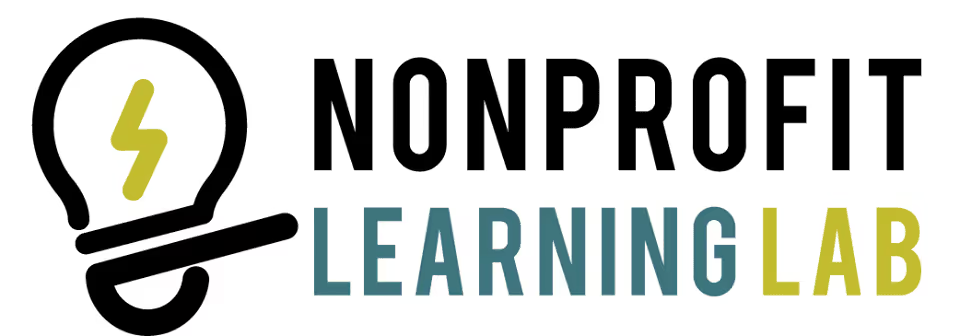Starting a nonprofit is a great idea. You want to help a cause and make the world a better place. It’s exciting thinking about making a real difference in the world and we can’t wait for you to make it happen! But before you can get started with your work, you’ll have to do a few less exciting things first, like officially form your nonprofit organization and obtain nonprofit status.
Think about it as if you’re starting a business… there are a lot of things you have to do before you ever start selling your product to customers. While your nonprofit isn’t a for-profit business, a similar amount of work goes into setting up your organization and registering with the IRS. This process can be annoying, long, and frustrating, but we’re here to help out and make things as simple and straightforward as possible. We’ve got you covered with this guide to obtaining nonprofit status.
What Exactly is a Nonprofit Organization?
First, let’s discuss what a nonprofit organization is and how there can be slight differences between how organizations are set up.
Nonprofit is a common term used to mean a variety of things. Ultimately, a nonprofit is a legal entity operating for a collective, social, or public benefit. Nonprofit organizations are tax-exempt, with a variety of tax codes for different types of organizations.
Your tax code will depend on what type of organization you have and what services you perform. These organizations are wide-ranging, from volunteer fire departments to labor unions to child care organizations. Each tax code includes different conditions that must be met in order to avoid paying federal taxes.
Along with being tax-exempt, all nonprofits have the common condition of not paying out profits, thus the term “nonprofit.”
However, what most people mean when they say nonprofit is actually a nonprofit that is a charity, also known as charitable nonprofits. This specific distinction falls under Section 501(c)(3) of the tax code, which refers to “public charities” and “private foundations.” This also includes churches and religious organizations.
Since the majority of nonprofits are charitable nonprofits, this article is going to focus specifically on creating a 501(c)(3) organization from this point forward. There are also multiple types of 501(c)(3) organizations, so next, we’ll discuss the most common types.
Types of 501(c)(3) Organizations
All of the different kinds of organizations and tax codes can get a bit confusing, but now that we are focusing primarily on charitable nonprofits we’ll quickly summarize the three most common types of 501(c)(3) organizations. Your organization will most likely fall under one of these categories.
Public Charity
A public charity is defined by the IRS as “not a private foundation.” Public charities are generally churches, hospitals, medical research organizations, schools, or colleges and universities.
Public charities also have an active program of fundraising and receive contributions from a variety of different sources, such as the general public, government agencies, corporations, private foundations, and other public charities.
In addition, the IRS says public charities “receive income from the conduct of activities in furtherance of the organization’s exempt purposes.” This means public charities raise funds by doing things that are furthering the mission of the organization, which is the very reason why the organization is exempt in the first place.
Finally, public charities tend to have active, supporting relationships with one or more other public charities.
The Internal Revenue Code defines public charities specifically under sections 509(a)(0) through 509(a)(4).
Private Foundation
Private foundations, on the other hand, tend to have a single major source of funding. This generally includes gifts from one family or corporation instead of gathering funding from many different sources like public charities do.
Additionally, the main activity of most private foundations is the creation of grants to other charitable organizations or individuals, rather than the direct operation of charitable programs.
The Internal Revenue Code defines private foundations under section 509(a) as 501(c)(3) organizations, which do not qualify as public charities.
Private Operating Foundation
A private operating foundation is similar to a private foundation, with the main distinction between the two being that private operating foundations devote most of their resources to the active conduct of their exempt activities.
Basically, a private operating foundation is any private foundation that spends the majority of its income directly toward the conduct of its exempt activities. This makes private operating foundations somewhat of a mix between charities and private foundations.
In addition, private operating foundations must meet one of the following tests from the IRS:
- The assets test
- The endowment test
- The support test
Determining what type of organization you are creating will be vital before you ever start the application process. Knowing exactly what you want your organization to be and its main functions will make the application process much easier. Now that you’ve figured out what type of 501(c)(3) organization you want to start, we’ll share the eight steps you’ll need to follow to obtain nonprofit status!
Steps to Start a 501(c)(3)
1. Choose a Name
Choosing a name for your nonprofit corporation is the first step in starting your journey toward 501(c)(3) status. Your organization’s name will be used for all of your official documents and filings with the IRS, as well as with state and local government agencies.
Your corporation’s name cannot be the same as any other organization, but your state’s corporations office can help you determine what names are available. Either way, your name must end with a corporate designator, such as “Limited,” “Incorporated,” or “Corporation.”
2. File Articles of Incorporation
The next step is to file articles of incorporation with your state. To do this, you will file a document with information including your organization’s name and the address for your office. While the document is pretty straightforward, there is specific language you will need to use in order to gain tax-exempt status.
Some states offer a nonprofit formation packet to help you through this process. Here is an example from Nevada. Contact your state’s corporations office or the Secretary of State’s office to check if a nonprofit formation packet is available in your state. Additionally, use this 50 state guide to help you during your filing process.
3. Apply for IRS Tax Exemption
The next step is to submit your federal 501(c)(3) tax exemption application to the IRS. You must also include a copy of your filed articles of incorporation along with your application.
To apply, you must complete IRS Package 1023 which is the “Application for Recognition of Exemption.” This package is 28 pages on its own, but the entire package can be as long as 100 pages by the time you have completed it and attached the necessary paperwork.
There is also Form 1023-EZ, which is the “Streamlined Application for Recognition of Exemption Under Section 501(c)(3) of the Internal Revenue Code.” This form is a much shorter application process used mostly for smaller nonprofits. You can complete this eligibility worksheet to find out if you can use this form for your application.
Since this application process is the most detailed and time-consuming during the creation of your 501(c)(3), you may need some extra help. The IRS website includes a step-by-step review to help you during your filing process. Nolo also has a useful guide with more information on Form 1023 and filing your application with the IRS.
Be prepared to pay a fee for either form you submit. The fee for Form 1023 is $600 and for Form 1023-EZ is $275.
4. Apply for State Tax Exemption
This step doesn’t apply to nonprofit organizations in every state, but certain states require a separate application to obtain exempt status. In most states, your tax exemption will be automatically granted once you’ve filed articles of incorporation and obtained your federal 501(c)(3) tax-exempt status.
In other states, you may still have to send in your IRS determination letter that grants you 501(c)(3) status and federal tax-exemption to your state in order to receive state exemption. To find out what you’ll be required to do in your state, you can visit your state government’s website to learn more.
5. Draft Bylaws
After you’ve filed for state tax exemption (if you were required to in your state), the next step is to draft bylaws for your nonprofit organization. These bylaws will be the internal governing rules for your entire organization. They will contain rules and procedures for things such as holding meetings, voting on issues, and electing directors or officers. The bylaws are normally adopted by the organization’s board of directors during the first board meeting.
6. Appoint a Board of Directors
After drawing up your nonprofit’s bylaws, the next step is to form a board of directors.
These individuals will be in charge of all major policy and financial decisions for the entire organization. Some states allow a single director on the board, while others require organizations to have at least three directors.
This process will also involve appointing officers (during the first board meeting) to the board of directors, such as a secretary and treasurer. Since the members of your board will be instrumental to your organization, make sure to choose individuals who align with your nonprofit’s mission. Your board members should also be dependable, dedicated, and have expertise in various fields so different members can be the go-to resource for things like legal, marketing, or financial information.
For a more in-depth look at building a nonprofit’s board of directors, visit the National Council of Nonprofits guide to board roles and responsibilities.
7. Hold a Meeting of Your Board
Once you’ve built your board of directors, it’s time to plan your very first board meeting. This will be an opportunity for all of your board members to meet each other and familiarize themselves with the operating procedures of the organization going forward.
During this meeting, you will also adopt the bylaws, appoint officers to the board (as mentioned earlier) for roles such as treasurer and secretary, and record the federal and state tax exemptions you have received. The officers you appoint will be critical to your nonprofit’s success since they will be in charge of all funds and keeping track of everything the board discusses.
Starting with this first meeting and going forward from then on, minutes of the meeting should be created and filed in your nonprofit’s records binder. Establishing these practices from the very beginning will help your organization ensure ongoing compliance with the requirements for maintaining tax-exempt status.
8. Obtain Licenses and Permits
The final thing to do in the process of attaining nonprofit status is to obtain the necessary license and permits your organization will need in order to do its work. This includes things like state tax permits and zoning permits. To determine what licenses or permits your type of organization needs, contact your state’s department of consumer affairs.
Benefits of Nonprofit Status
There are many different steps, forms, and decisions that go into obtaining nonprofit status, so what does all that work get you? Well, there are many benefits of being a tax-exempt nonprofit under Section 501(c)(3), including:
- Tax-exempt status – This is the main benefit of obtaining 501(c)(3) nonprofit status as you are exempt from paying federal and state income taxes
- Deductibility of donations – Your donors are able to deduct their donations from their taxes
- Limited liability protection – Your nonprofit organization provides its members protection against personal liability for the activities of the nonprofit
- Possible exemption from state sales and property taxes
- Exemption from federal unemployment tax
- Grant eligibility – Your organization is eligible for local, state, and federal grants
- Discount postage rates and special nonprofit mailing privileges
- Discounts on publicity – This includes free or discounted rates for press releases and other announcements
- Credibility – Being a 501(c)(3) organization will legitimize your nonprofit and make it more credible in the eyes of the public
- Permanent existence – You never have to renew your 501(c)(3) status
While there is a lot of information located in this guide, it is impossible to discuss the details of everything that goes into obtaining nonprofit status in one article. However, there are numerous links to other helpful resources throughout the article that will benefit you during this process and include more in-depth information on specific areas.
Obtaining nonprofit status is a lot of work, but doing so will be worth it for your organization in the long run. Enjoy the many benefits of achieving 501(c)(3) status by getting started on the necessary steps today. Just remember, once you obtain 501(c)(3) status, you never have to apply for it again!
.svg)


.svg)
.svg)
.svg)

.avif)








































































































.svg)
.svg)
.svg)
.svg)